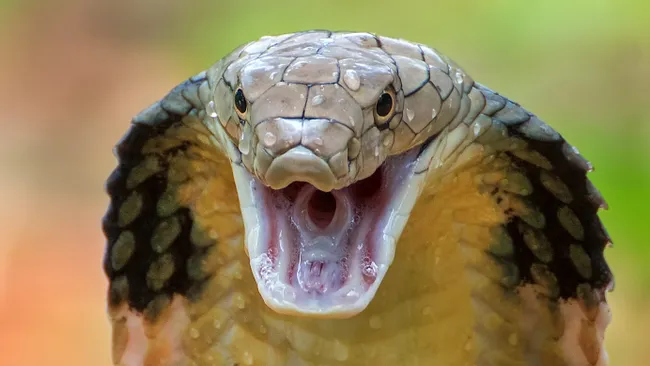An encounter with these venomous snakes could be deadly. They hiss, they slither, and, unfortunately for both humans and unsuspecting prey, they bite. According to the World Health Organization, venomous snakes bite approximately 5.4 million people each year, leading to between 81,000 and 138,000 deaths.
The secret to their deadly power lies in their venom, which consists of toxic substances produced in specialized salivary glands and delivered via their fangs.
Venom first evolved around 60 million years ago, after large constrictors like boas and pythons diverged from other snakes, explains Agneesh Barua, an evolutionary geneticist at the University of Lausanne in Switzerland. These early non-venomous ancestors likely already produced mildly toxic proteins in their secretory glands, giving them a significant advantage in capturing prey. “Over millions of years, more and more toxins were incorporated into the venom,” Barua noted.
Despite the wide variety of snakes, venoms are primarily composed of four types of compounds: phospholipases, serine proteases, metalloproteases, and three-finger toxins. Each type has distinct physiological effects. For instance, three-finger toxins disrupt nerve transmission, while phospholipases and metalloproteases can digest tissue, leading to swelling, tissue death, and severe bleeding.
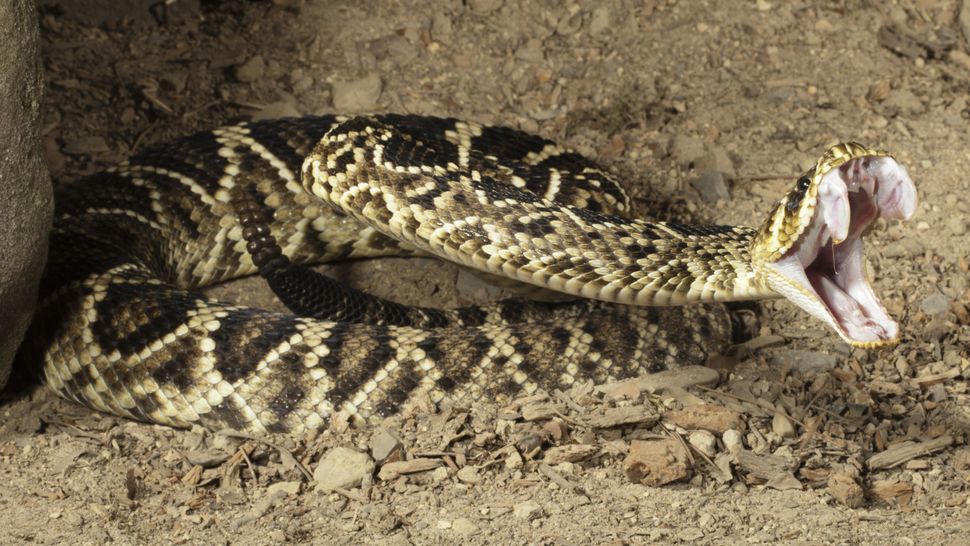
A single snake’s venom can contain multiple compounds, each with its own deadly effects. Among the most dangerous is the Eastern diamondback rattlesnake (Crotalus adamanteus), the largest rattlesnake in the U.S., found across southeastern states including Florida, North Carolina, South Carolina, Alabama, Georgia, Mississippi, and Louisiana.
Eastern diamondbacks are ambush predators, lying quietly coiled until prey approaches. They can strike up to two-thirds of their body length, injecting a large dose of venom with each bite. They are not typically aggressive toward humans, with bites usually occurring when a snake is intentionally provoked or accidentally stepped on, according to the Florida Museum.
Their venom destroys red blood cells and causes severe tissue damage. If left untreated, an Eastern diamondback bite can be fatal in 10% to 20% of cases.
12. COMMON DEATH ADDER
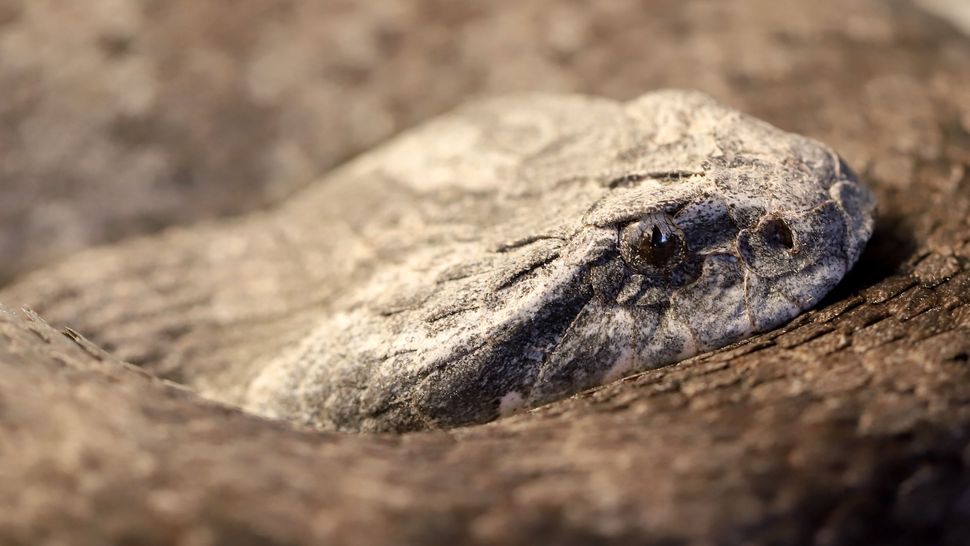
Common death adders inhabit coastal regions of southern, eastern, and northern Australia. They are easily identifiable by their broad, triangular heads, short and thick bodies, and thin tails. These snakes are ambush predators, lying in wait under leaves until they are ready to strike at unsuspecting prey such as frogs, lizards, and birds.
Human encounters with common death adders are rare, typically occurring when someone accidentally steps on one. Their venom induces paralysis and can be lethal. According to the Australian Museum, before the introduction of antivenom in the 1950s, approximately 60% of bites were fatal. The most recent recorded human fatality from a common death adder bite occurred in 1930.
11. THE EASTERN BROWN SNAKE
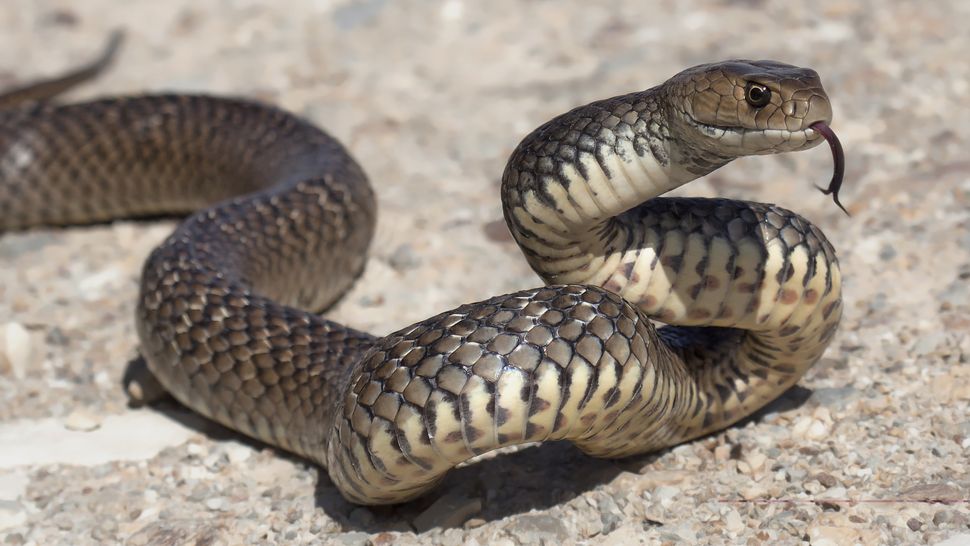
The Eastern brown snake, native to eastern Australia, holds the grim distinction of causing more human fatalities than any other snake species in the country. Its venom is extraordinarily potent, containing powerful toxins that can induce paralysis and internal bleeding. Surprisingly, the initial bite is often painless, as noted by the Australian Museum.
“They’re the only snakes in the world that regularly kill people in under 15 minutes,” remarked Bryan Fry, a venom researcher at the University of Queensland, in an interview with ABC News in 2024. “Even more insidiously than that is that for the first 13 minutes, you’re going to feel fine.”
Eastern brown snakes are diurnal hunters and frequently inhabit suburban areas of cities and large towns, bringing them into frequent contact with humans. Many incidents involving Eastern brown snake bites occur when people attempt to kill them.
10. BLACK MAMBA
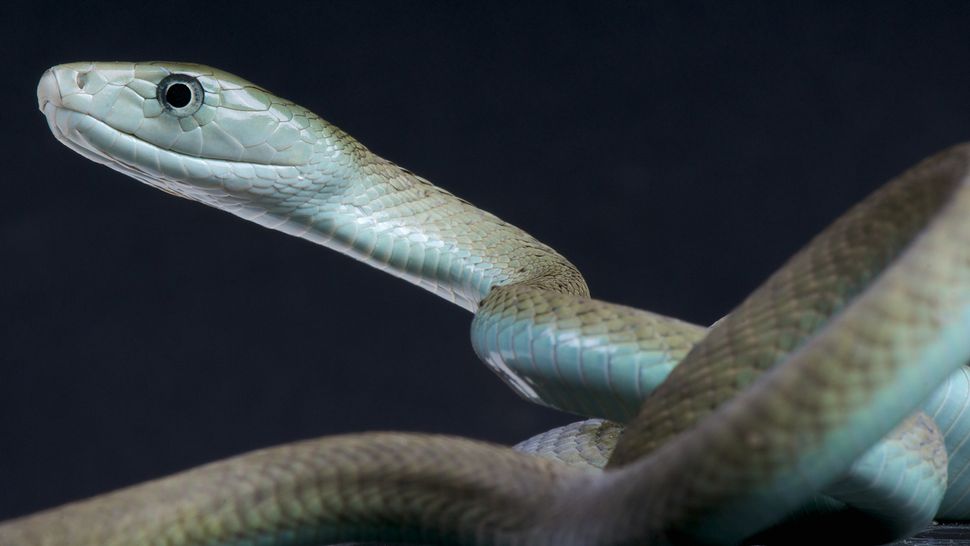
Black mambas are renowned as some of the most fearsome snakes worldwide. Despite their name, which comes from the dark, inky color inside their mouths, black mambas are actually brownish in hue. They typically reach an average length of around 8 feet (2.5 meters).
These snakes are known for their incredible speed and lethal venom. They are believed to be responsible for as many as 20,000 fatalities annually, although exact figures are challenging to ascertain.
Yes, a black mamba bite is considered extremely dangerous and potentially fatal without prompt medical treatment. Here are some key points about black mamba venom and their bites:
- Venom Potency: Black mambas have venom that contains potent neurotoxins known as three-finger toxins. These toxins interfere with nerve cell function, causing paralysis and potentially leading to respiratory failure and cardiac arrest.
- Lethal Dose: It is reported that a black mamba can kill a person with just a small amount of venom, as little as two drops. Adult black mambas can store up to 20 drops of venom in each fang.
- Lethality Without Treatment: Without timely treatment with antivenom and supportive care, a bite from a black mamba is often lethal. The venom acts quickly, disrupting nerve-muscle junctions and potentially affecting heart function.
- Case Example: There have been documented cases where individuals bitten by black mambas have died even with medical intervention. For instance, a South African man bitten on his index finger went into cardiac arrest within 20 minutes of being bitten, despite receiving antivenom. Unfortunately, he passed away days later.
- Speed and Distribution: Black mambas are known for their speed, capable of moving at speeds up to 12 mph (19 km/h). They are found in various countries across sub-Saharan Africa, inhabiting savannas, open woodlands, rocky hills, and utilizing locations such as hollow trees and termite mounds for shelter.
In summary, while fatalities from black mamba bites can be prevented with prompt medical care including antivenom administration, the venom’s potency and rapid onset of symptoms make immediate treatment crucial to survival.
9. FER-DE-LANCE
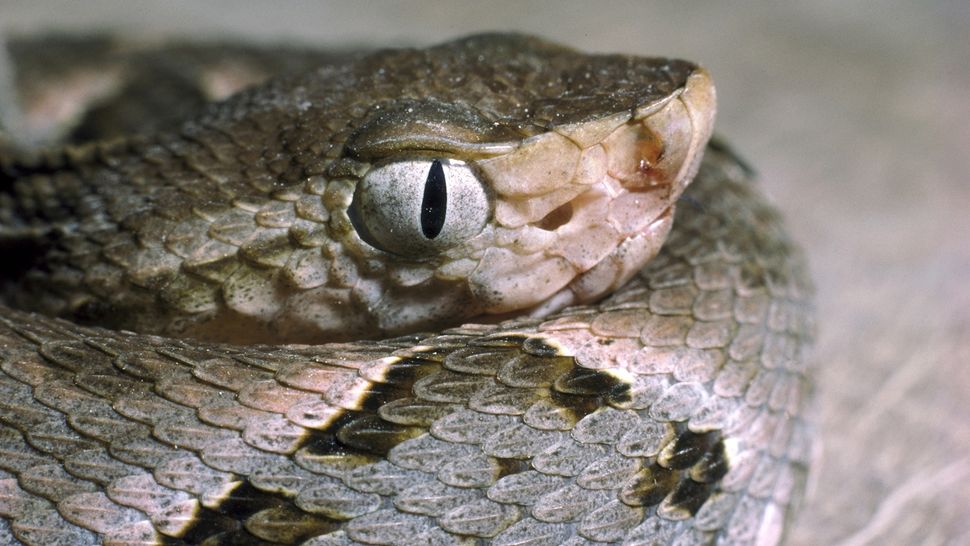
A bite from a fer-de-lance (Bothrops asper), a pit viper found in Central and South America, can have devastating effects on human tissue. According to a 1984 study in the journal Toxicon, the venom can cause body tissues to turn black as they begin to die.
These formidable snakes typically measure between 3.9 and 8.2 feet (1.2 and 2.5 meters) in length and can weigh up to 13 pounds (6 kilograms). They are notorious for their role in about half of all snakebite venom poisonings in Central America, as reported in a 2001 study in Toxicon.
The venom of fer-de-lance belongs to a class of proteins called metalloproteases, which are capable of digesting tissue. This can lead to necrosis (tissue death), swelling (edema), and bleeding, explains Agneesh Barua, an expert in evolutionary genetics. Additionally, the venom acts as an anticoagulant, impairing blood clotting and potentially causing hemorrhaging in bite victims.
Adding to their fearsome reputation, female fer-de-lance snakes are prolific reproducers, capable of giving birth to as many as 90 offspring, as noted by the University of Costa Rica.
In summary, encountering a fer-de-lance in the wild is a perilous situation due to its potent venom and aggressive nature, highlighting the importance of caution and prompt medical treatment in the event of a bite.
8. BOOMSLANG
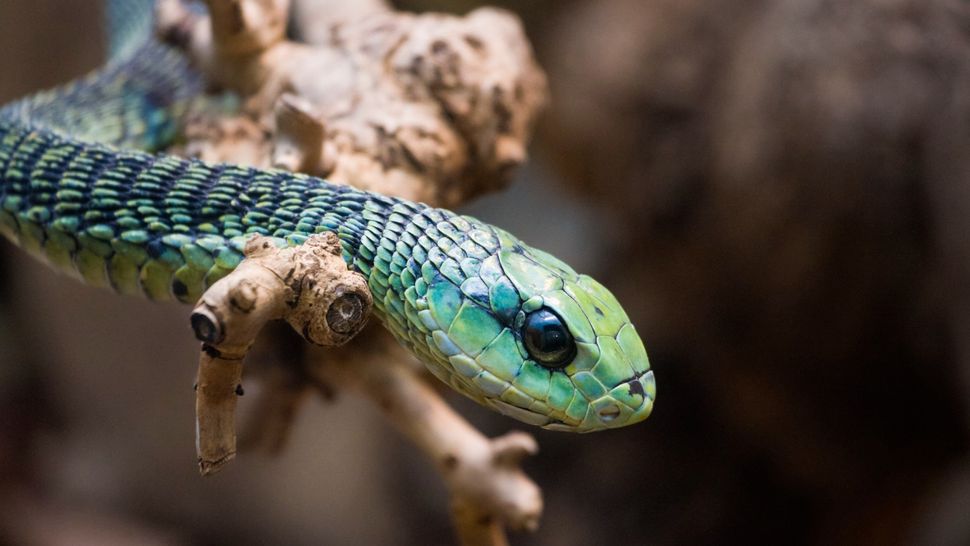
The tragic death of herpetologist Karl Patterson Schmidt, who succumbed to a bite from a juvenile boomslang (Dispholidus typus), highlights the deadly potential of this seemingly innocuous snake. Schmidt’s demise, reported in 2017 in the journal Biochimica et Biophysica Acta, occurred approximately 24 hours after the bite, resulting in internal bleeding affecting his eyes, lungs, kidneys, heart, and brain. At the time (1890), Schmidt, like many others, believed rear-fanged snakes such as the boomslang couldn’t deliver a fatal dose of venom to humans—a misconception that proved fatal.
The boomslang, primarily found in Swaziland, Botswana, Namibia, Mozambique, and Zimbabwe across Africa, is noted as one of the most venomous rear-fanged snakes, according to the University of Michigan Museum of Zoology. These snakes have the ability to retract their fangs into their mouths when not in use. Similar to other venomous snakes, the boomslang possesses hemotoxic venom, which induces internal and external bleeding in its victims, as reported by the museum.
Despite its deadly venom, the boomslang is visually striking, characterized by an egg-shaped head, large eyes, and a vibrant green patterned body. When threatened, it can inflate its neck, doubling its size, and expose a brightly colored flap of skin between its scales, as noted by SANBI (South African National Biodiversity Institute).
Victims of a boomslang bite endure a horrific fate described by Scientific American as extensive muscle and brain hemorrhaging, accompanied by bleeding from every possible orifice including gums, nostrils, and even minor cuts. Blood may also appear in stools, urine, saliva, and vomit until death occurs. Fortunately, antivenom exists for boomslang bites if administered promptly.
In conclusion, encounters with boomslangs underscore the importance of caution and swift medical intervention in regions where these snakes are prevalent, highlighting their lethal capabilities despite their intriguing appearance.
7. EASTERN TIGER SNAKE
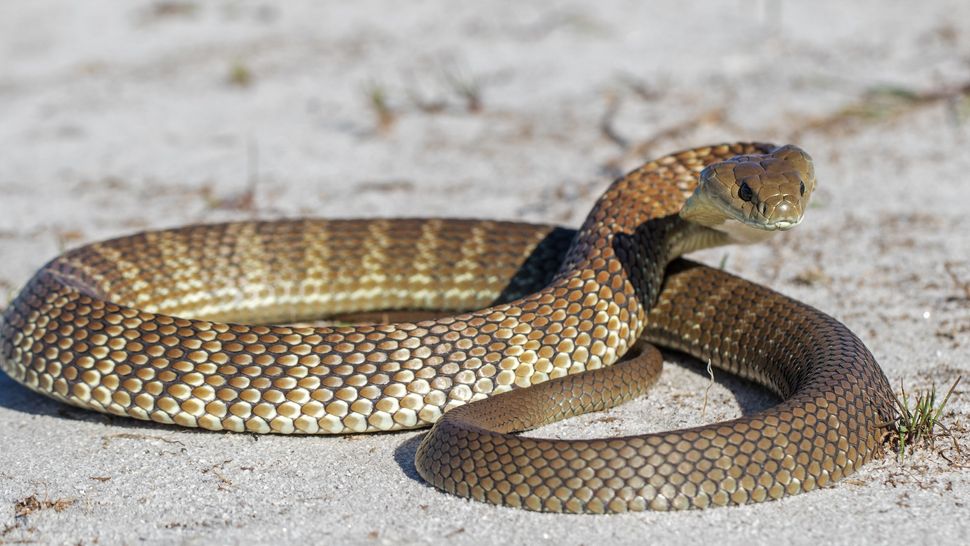
The eastern tiger snake (Notechis scutatus), native to the mountains and grasslands of southeast Australia, derives its name from the distinctive yellow and black bands on its body, although not all populations display this pattern, as noted by the Australian Museum. Despite variations in appearance, these snakes are uniformly recognized for their potent venom.
Capable of causing severe poisoning in humans within just 15 minutes of a bite, the venom of the eastern tiger snake poses a significant threat. On average, it is responsible for at least one fatality annually, according to the University of Adelaide.
Encounters with eastern tiger snakes underscore the importance of caution in their habitat. Despite their striking appearance, these snakes’ venomous capabilities highlight the necessity of prompt medical attention in the event of a bite to mitigate potentially life-threatening consequences.
6. RUSSELL’S VIPER
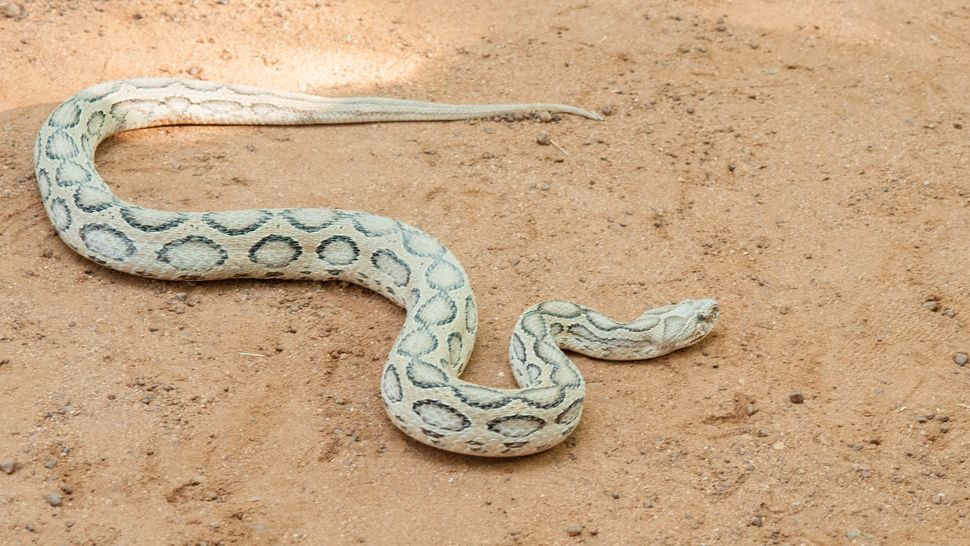
The deadliest snake in the world, responsible for a significant number of fatalities annually, is the Russell’s viper (Daboia russelii). Found predominantly in South Asia, particularly India and Sri Lanka, this viper is notorious for causing a high mortality rate among snakebite victims.
Russell’s viper venom is extremely potent and complex, containing a variety of toxins that affect different physiological systems in the body. It can lead to severe symptoms such as acute kidney failure, extensive bleeding, and damage to multiple organs. The venom’s components also include factors that disrupt blood clotting, potentially causing acute strokes and other complications.
In regions where the Russell’s viper is prevalent, such as rural areas of India and Sri Lanka where agricultural activities are common, encounters with this snake can be particularly deadly. Farmers working in fields, including paddy fields where the viper often rests, are at heightened risk during harvest seasons.
Despite efforts to improve antivenom availability and medical care, fatalities from Russell’s viper bites often result from complications such as renal failure. The snake’s aggressive nature and potent venom make rapid medical intervention crucial for increasing the chances of survival among bite victims.
5. SAW-SCALED VIPER
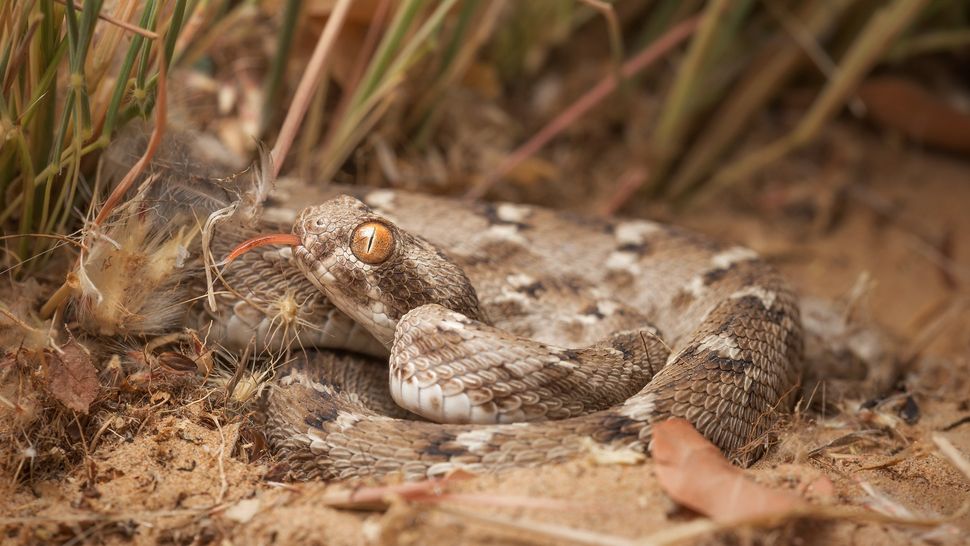
The saw-scaled viper (Echis carinatus) holds a notorious place among the “Big Four” venomous snakes in India, alongside the Russell’s viper, common krait, and Indian cobra. Collectively, these snakes are responsible for a significant number of snakebite incidents and related deaths in the country, estimated at about 58,000 fatalities annually.
Unlike the typical hissing sound associated with snakes, the saw-scaled viper produces a distinctive “sizzling” sound when threatened, caused by rubbing together special serrated scales.
A bite from a saw-scaled viper initially causes localized swelling and intense pain, followed by potential hemorrhaging due to the venom’s ability to disrupt blood clotting. This can lead to severe internal bleeding and, ultimately, acute kidney failure, as explained by Understanding Animal Research.
Immediate medical intervention is crucial for survival. Treatment includes hydration and administration of specific antivenoms. There are nine types of antivenom available for this snake, highlighting the necessity for prompt access to medical care to counteract the effects of the venom and improve the victim’s chances of recovery.
In regions where saw-scaled vipers are prevalent, awareness of their presence and proactive measures to avoid encounters are essential for minimizing the risk of bites.
4. BANDED KRAIT
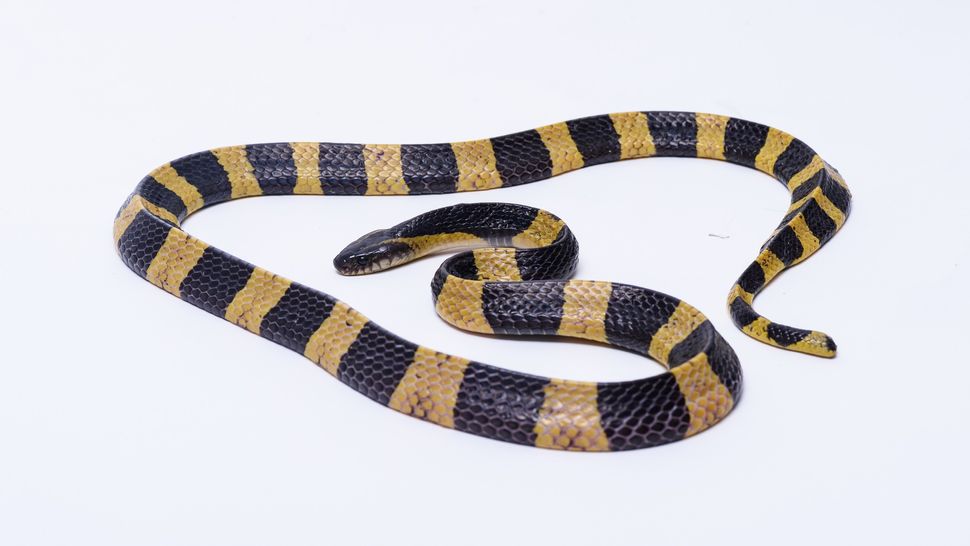
The banded krait (Bungarus fasciatus), known for its distinct banded pattern, exhibits a behavior typical of many kraits by being more active at night than during the day. This nocturnal behavior increases the likelihood of encounters with humans after dark.
The venom of the banded krait contains neurotoxins that act specifically on the nervous system, leading to paralysis of muscles, including those responsible for breathing. A 2016 study published in the journal PLOS Neglected Tropical Diseases highlights that the venom’s effect on the diaphragm can prevent normal respiratory movements, effectively causing suffocation by inhibiting air from entering the lungs.
Encounters with the banded krait underscore the importance of caution in areas where these snakes are found, particularly during nighttime hours when their activity peaks. Prompt medical attention is crucial in the event of a bite, as treatment typically involves administering antivenom to counteract the neurotoxic effects of the venom and support respiratory function.
Awareness of the banded krait’s behavior and venomous capabilities is essential for communities and healthcare providers in regions of Southeast Asia where these snakes are prevalent, ensuring appropriate measures are taken to mitigate risks associated with their presence.
3. KING COBRA
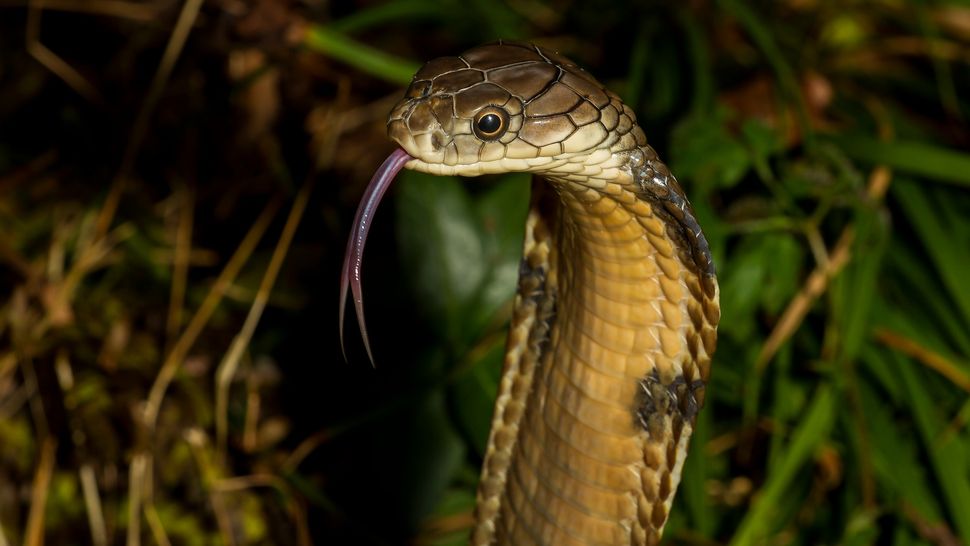
The king cobra (Ophiophagus hannah) holds several remarkable distinctions in the snake world, making it both formidable and fascinating. According to the Natural History Museum in London, it is the world’s longest venomous snake, capable of reaching lengths up to 18 feet (5.4 meters). Its exceptional eyesight, as noted by the Smithsonian Institution, enables it to detect movement from a considerable distance of nearly 330 feet (100 meters).
When threatened, the king cobra exhibits an intimidating defensive display by expanding its hood, a feature created by specialized ribs and muscles in its neck. Additionally, these snakes can elevate their heads about a third of their body length from the ground, as observed by the San Diego Zoo.
While the king cobra’s venom may not be the most potent among venomous snakes, its sheer volume is staggering. Each bite delivers approximately 7 milliliters (about 0.24 fluid ounces) of venom, and the snake typically strikes with multiple bites in rapid succession, as reported by the Fresno Zoo. This venomous cocktail contains neurotoxins that can swiftly incapacitate prey or predators alike.
Sean Carroll, a molecular biologist at the University of Maryland, highlighted in The New York Times that even a single bite from a king cobra can be lethal to a human within 15 minutes, underscoring its potent venomous capabilities. Remarkably, the venom is also capable of causing death in larger animals such as adult elephants within a matter of hours.
The king cobra’s combination of size, visual acuity, defensive behavior, and potent venom makes it a subject of both fear and fascination, highlighting its pivotal role in its ecosystem and the need for respectful caution in its presence.
2. COASTAL TAIPAN
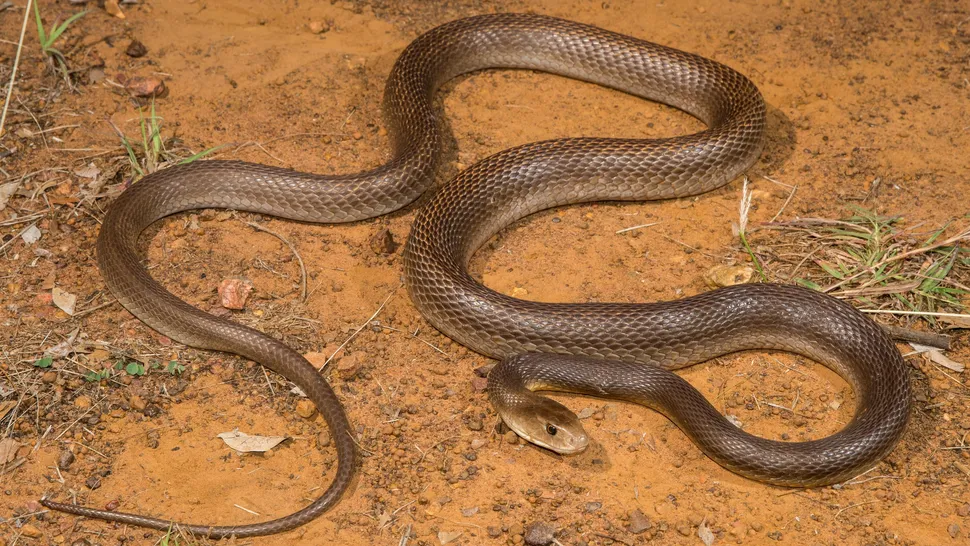
The coastal taipan (Oxyuranus scutellatus) is renowned for its lightning-fast speed and deadly venom, making it one of Australia’s most fearsome snakes. According to the Australian Museum, this snake inhabits the wet forests of temperate and tropical coastal regions, where its hunting prowess is enhanced by its incredible agility.
When threatened, the coastal taipan can swiftly elevate its entire body off the ground, launching itself with remarkable precision to deliver multiple bites in quick succession. Each bite injects a potent venom containing neurotoxins that disrupt nerve transmission, leading to rapid paralysis and potentially fatal consequences.
Historically, encounters with the coastal taipan were exceedingly perilous. Australian Geographic notes that prior to 1956, when an effective antivenom was developed, bites from this snake were almost always fatal. The advent of antivenom has since improved the chances of survival for victims, underscoring the critical importance of swift medical intervention following a bite.
Awareness of the coastal taipan’s behavior and venomous capabilities is crucial for residents and visitors in its habitat areas. Respectful caution and prompt access to medical care remain essential safeguards against the potential dangers posed by this formidable snake.
1. INLAND TAIPAN
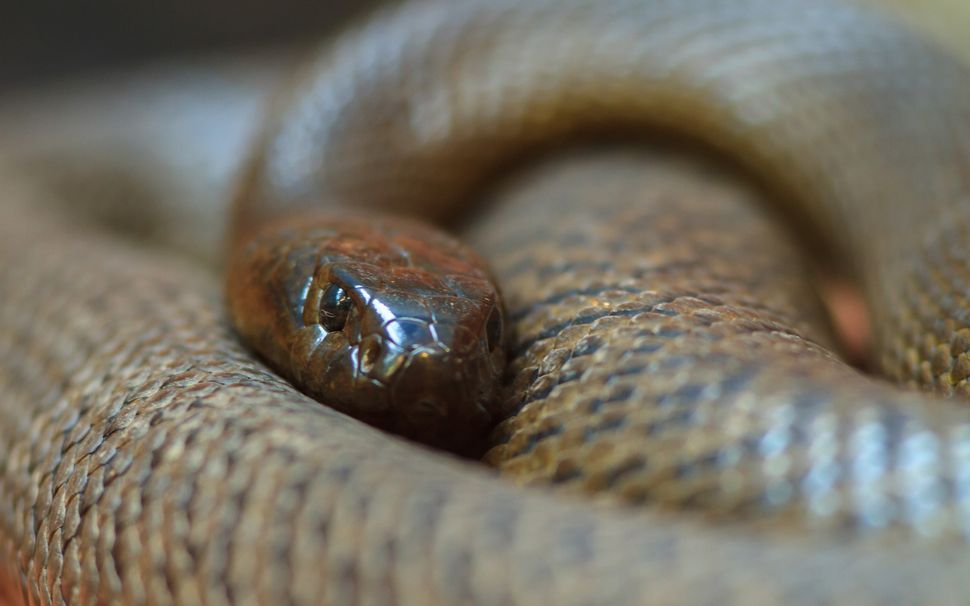
The inland taipan (Oxyuranus microlepidotus), widely regarded as one of the most venomous snakes in the world, possesses venom so potent that even a minute amount can prove fatal to its prey or human victims. This snake inhabits the clay crevices of Queensland and South Australia’s remote floodplains, often residing within pre-dug burrows originally occupied by other animals. Due to its preference for these secluded habitats, encounters with humans are rare, as noted by the Australian Museum.
When threatened, the inland taipan adopts a defensive posture by coiling its body into a tight S-shape before delivering rapid, precise bites. The venom of the inland taipan is notably distinguished by the presence of the enzyme hyaluronidase, a key component identified in a 2020 issue of the Toxins journal. This enzyme plays a critical role in facilitating the rapid absorption of toxins into the victim’s body, enhancing the venom’s potency and effectiveness.
The remote and elusive nature of the inland taipan underscores the importance of cautious behavior and respect for its habitat among those who may venture into its range. Awareness of its potent venom and swift defensive responses highlights the necessity for prompt medical intervention in the event of a bite, emphasizing the critical role of specialized antivenom in mitigating the potentially lethal effects of this formidable snake’s venom.
